
































































































































































































































































































Wayne Cavadi
By James Careless










Brad Hintze
Nyere Hollingsworth










































































































































































































































































































































































Wayne Cavadi
By James Careless










Brad Hintze
Nyere Hollingsworth








































































In late March, Absen opened its New York Experience Center, where AV professionals can explore the company’s latest LED display technology. Located in Manhattan, the 2,694-square-foot facility offers hands-on product demonstrations, technical training, and industry collaboration opportunities.
The Experience Center showcases Absen's most advanced dvLED solutions, designed for applications in corporate, retail, live events, broadcast, and virtual production. It will also highlight innovations from technology partners—including Yealink, TSI Touch, Rocket Alumni Solutions, Haivision, B-Tech AV Mounts, tvONE and Green Hippo, and Brompton Technology—to enhance the visitor experience by demonstrating real-world applications of integrated LED display solutions.
Strategically positioned just blocks from Penn Station and Times Square, the facility offers a convenient and immersive space for AV professionals and end users. “As the demand for high-performance LED display solutions continues to grow, the Absen New York Experience Center will serve as a vital resource for industry professionals to explore our latest innovations,” said James Liu, president, Absen.
Global AV integrator Avidex has acquired Visual Commands, a technology-driven AV programming and design consultant known for its expertise in custom programming and design, control system coding, automation, and remote monitoring service solutions. The acquisition strengthens Avidex’s position in the AV industry by bringing expanded capabilities, deeper technical expertise, and a shared commitment to client success.
With a trusted partnership spanning more than two decades, Visual Commands and Avidex have spent the last five years collaborating to develop and implement Avidex Assure, a remote monitoring and managed services platform.
As part of this transition, Monty Champoux, president of Visual Commands, will join Avidex as CTO, where he will lead technology strategy and innovation across Avidex’s portfolio. The entire Visual Commands team has seamlessly transitioned to Avidex, ensuring uninterrupted service and expertise for their existing clients while gaining access to Avidex’s resources, including its national help desk.

“Joining forces with Avidex allows us to scale our capabilities and continue to deliver outside the box, specialized programming and platforms to clients while enhancing our service offerings,” said Champoux. “In my new role as CTO, I’m eager to drive forward-thinking strategies and solutions to push the boundaries of what’s possible in AV technology and continue delivering exceptional experiences to our clients.”
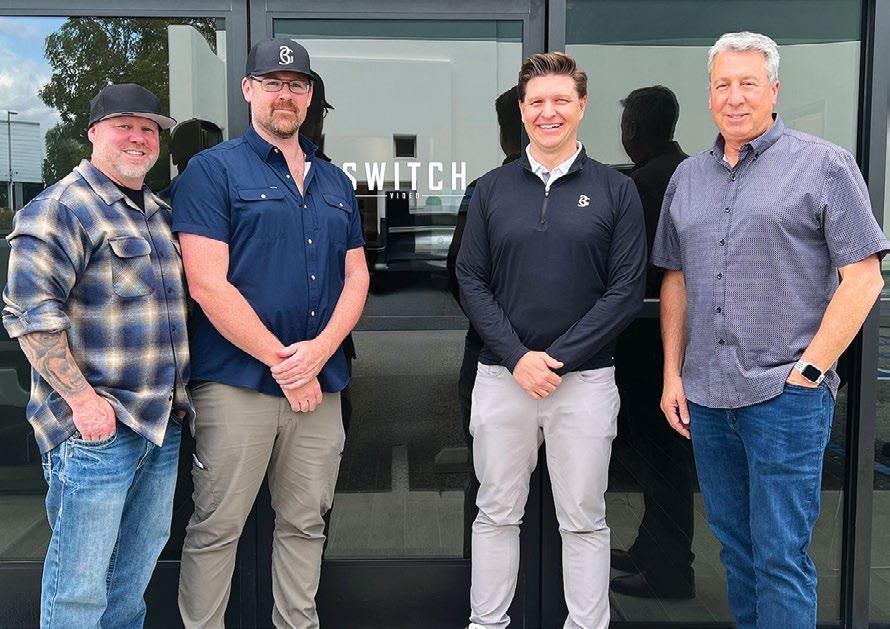
Over the past two decades, West Coast-based 3G Productions has steadily grown its live event production services and systems integration businesses. Bolstering the company’s strategic plans to diversify its client base and further develop into a national brand, 3G Productions has purchased the assets of Switch Video, a provider of video rental services for the film/television, corporate/tradeshow, and live event and touring industries.
3G assumed ownership of Switch Video’s operations in both Castaic, CA and Atlanta, rebranding them as 3G Productions facilities. Switch’s leadership team—including industry veterans Alan Barber, Justin Edgerly, and Shawn Orm—will remain with 3G will be tasked with leading the business development of the company’s new vertical markets.
“Switch’s talented team of industry experts fits very well into 3G’s culture as our ‘people first’ organization continues to expand,” said Keith Conrad, CEO, 3G Productions. “This acquisition represents a significant step forward in our commitment to grow into a national full-service production company with a deep and diversified client base.”
Shure collaborated with two other international audio equipment brands to address a network in China engaged in the largescale manufacture and export of counterfeit products, including microphones, headphones, and amplifiers.
In May 2023, Shure received information about a network of nine entities in China exporting counterfeit audio equipment to Southeast Asia. The network operated more than 80 separate online stores selling to customers in five countries. (Shure recommends customers only purchase Shure products through authorized retailers.)
China’s police force in the province, the Guangdong Province Public Security Bureau (PSB),
launched simultaneous raids against the targets, seizing counterfeit products at several locations in August 2023. The PSB investigation found more than $1.7 million in sales of counterfeit products from various international brands, including nearly $900,000 of counterfeit Shure products.
The case concluded in December 2024 with seven suspects sentenced to imprisonment ranging from two to more than four years and fines totaling $1.1 million. Shure and one other participating brand also concluded settlement agreements with the suspects for considerable compensation.
“Counterfeit products hurt everyone, including customers and authorized retailers, and we will continue to protect our brand from these illegal
activities,” said Eric McAlpine, VP and chief legal officer, Shure. “Shure has been in business for 100 years and we want our customers to experience the quality of a genuine Shure product.”
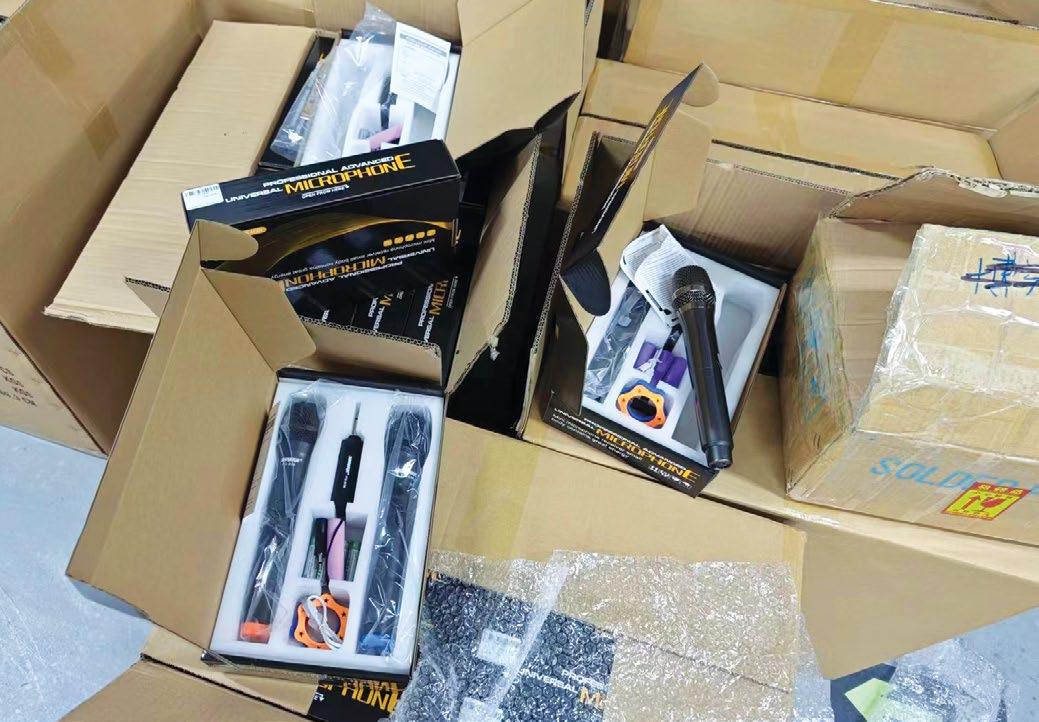

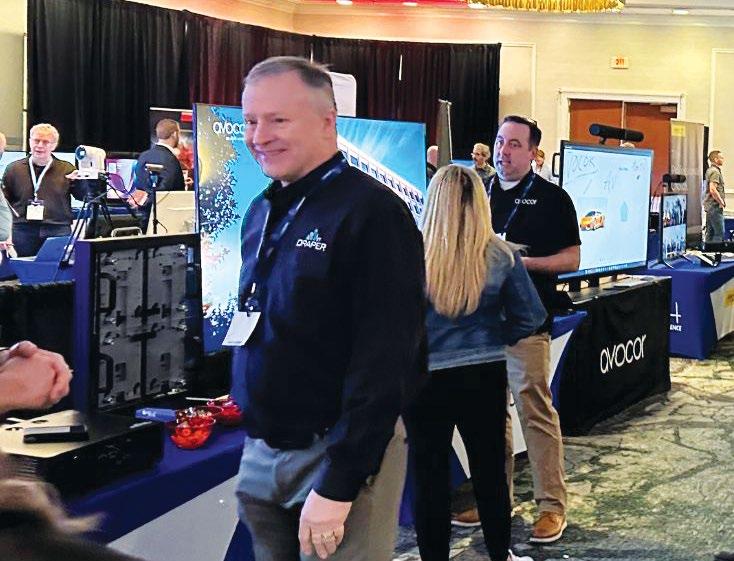

By Jennifer Guhl
The NY Metro E4 Experience, the second E4 from Exertis Almo in 2025, took place on April 2 at the Teaneck Marriott in Teaneck, NJ, following its kickoff event in Dallas in March. Now in its 16th year, the one-day events unite Exertis Almo resellers, integrators, consultants, and end users for programs filled with informative sessions and hands-on experiences featuring the latest industry solutions from major vendors as well as niche vendors.
One of the major announcements from the event was the rebranding of Exertis Almo’s well-established services portfolio to LinkLab, which provides a comprehensive range of services, tools, and support that can be tailored to a particular business and project. Services include engineering and drafting, design and 3D modeling, programming and commissioning, labor support, and the new Autora digital signage management platform.
LinkLab can help with complex tasks that may exceed an integrator’s expertise, helping to streamline operations and complete projects more efficiently. “We came up with LinkLab as the name, link being our connection to the customer and the lab aspects being that vision, that future-forward thinking,” said Cory Allen, vice president of services with Exertis Almo.
Beyond the traditional services customers are using, LinkLab provides an innovative experience that breaks the conventional services mold. Allen said it's truly a safe space for exploration, with some of the best success stories coming from customer requests. “We do a lot of experimental stuff, so it's really cool in our business to try things out,” he added.
She noted that it took the internet seven years to reach 100 million users, while ChatGPT achieved that milestone in just two months. People are quickly adopting GenAI to remove low to no-value tasks from their daily work, enabling them to concentrate on higher-impact contributions.
However, a change in mindset will be necessary for a more significant adoption of generative AI. “Just because you give every household a treadmill doesn’t mean we’re going to cure heart disease,” she added. Access might be the first step, but fostering engagement and support across your departments is equally important.
Stewart mentioned that Microsoft has effectively encouraged employees to go beyond seeing AI simply as a search engine and to recognize it as a tool for automation, content creation, and summarization. “I don’t even go into my quicksand box anymore,” she said of her email. Instead, Copilot highlights her essential emails, allowing her to spend less time responding to and feeling burdened by constant emails. It also aids her in prioritizing her day by extracting action items she can quickly address.

The NY Metro E4 Experience also featured keynote speaker Amanda Stewart from Microsoft, who offered an insightful look at how generative AI, particularly Microsoft Copilot, is transforming the modern workplace. “We are in the middle of our fourth major transformation and platform shift right now into AI,” Stewart explained, acknowledging that what distinguishes this shift is “the speed at which this is happening.”
With the success of the E4 Experience, Exertis Almo has begun experimenting with Plug-in events in cities beyond the E4 locations. Two Plug-ins have already taken place, and there are plans to visit Cincinnati, Denver, and Nashville in 2025.
Plug-in events are designed to be less of a trade show, with more of a focus on networking. They are also hosted at nontraditional venues, such as the recent event in Atlanta, which took place at a brewery and attracted 65 attendees. According to Greg O’Rourke, director of trade shows and events with Exertis Almo, Plug-ins enable everyone, including individuals not near E4 Experience locations, to engage on a different scale. “It doesn't support the size of an E4," he said, "but it does support us going there and getting our sales team to network with their customers and getting their customers to network with these large manufacturers that they would never have that opportunity to."
Exertis Almo will bring the E4 Experience to Santa Clara, CA, on Sept. 10 and Chicago on Oct. 7.

The KMH INTEGRATION team is expanding with the addition of DON SPERLING, who will lead the company’s growing creative services division as SVP of broadcast and digital engagement. Sperling was previously SVP and executive producer for the New York Giants, where he continually re-invented the team’s in-house content and production workflows, creating dynamic gameday and branded content to enhance the fan experience.
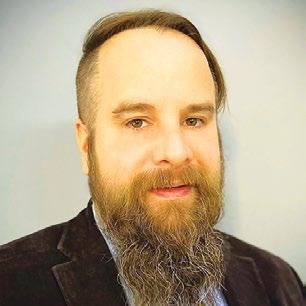
LECTROSONICS has hired JONATHAN VON RENTZELL as Central U.S. regional sales and technical manager. Von Rentzell plays a vital role across 19 states: North Dakota, South Dakota, Wyoming, Nebraska, Colorado, Utah, Kansas, Oklahoma, New Mexico, Texas, Arkansas, Louisiana, Indianna, Iowa, Missouri, Minnesota, Wisconsin, Illinois, and Michigan. His activities include presenting Lectrosonics products to rep firms, dealers, and systems integrators, as well as existing and potential customers. Recently, he was also the sole U.S. representative for Dotterel Technologies.

LISTEN TECHNOLOGIES has welcomed DAVID SERPA as its new financial controller. In this role, Serpa manages accounting records, ensures compliance with regulations, analyzes financial data, and oversees accounting operations. Serpa has extensive

experience in accounting, finance, and international trade and strategy at manufacturing and high-tech organizations. Listen Technologies has also promoted KASEY KAUMANS to market development manager. In this new role, Kaumans continues to foster the company’s partnerships with the consultant and end user communities and identifies growth opportunities for Listen Technologies in adjacent markets. Most recently, he was regional sales manager for the East Coast.

LYNX TECHNIK has appointed DR. MARKUS MOTZKO as head of production and administration. Motzko has extensive experience in production processes, manufacturing optimization, and technical leadership, with a strong background in the semiconductor and medical technology industries. Before joining LYNX Technik, he played a key role at Littelfuse-IXYS Semiconductor in Germany. In his new role, Motzko is responsible for improving production efficiency, managing supply chain operations, and overseeing administrative functions at LYNX Technik.
RCF has welcomed BRIAN ESPINOSA to the newly created position of Western territory manager. Espinosa oversees sales and marketing support activities across the western United States, further strengthening RCF’s presence in the region. His responsibilities include managing key product lines,
MEYER SOUND has announced strategic organizational changes aimed at better aligning the company’s strengths and reinforcing its leadership structure. The company is broadening the responsibilities of principal department heads to harmonize its operations across multiple regions. To that end, SVP JOHN MCMAHON now oversees R&D and operations in addition to sales and marketing, while key Meyer Sound regional leaders will assume expanded responsibilities. AMY LULEY has been named senior director sales, Americas. In her newly expanded role, she oversees technical services in addition to sales for the Americas. WOLFGANG LEUTE, managing director, Europe, will now also serve as senior director sales, EMEA/APAC. In his expanded role, he oversees technical services for the EMEA and APAC regions. And ROLAND MORCOM is now sales manager, Europe, and oversees Meyer Sound’s distribution networks in the region.





working closely with dealers, integrators, and production companies across Washington, Oregon, California, Nevada, Arizona, Colorado, Utah, Montana, and Hawaii. Espinosa brings more than two decades of experience in the professional audio industry to his new role.
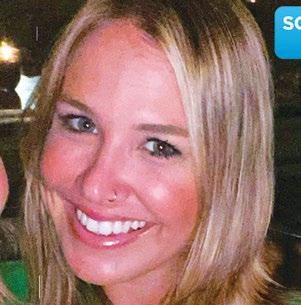
has appointed JACKIE FREIBERGER as Western regional sales manager, expanding the sales team to further support resellers and end users across the Western United States. Freiberger, a seasoned AV professional, brings extensive experience in sales, manufacturing, and distribution across both U.S. and international markets. In her new role, she is focused on driving sales growth, strengthening partnerships, and expanding SCT’s presence in the Western region.

Founder of Neutral Human and a thought leader in the AV industry, SARAH COX joins the STAGE PRECISION team in the role of chief commercial officer. With her years of experience in commercial strategy, marketing, and the converging nature of the industries around us, Cox will focus on driving SP’s commercial direction as well as overseeing brand, marketing, and customer experience strategies.



By Mark J. Pescatore
SCN: How has the business grown since you took over?
Matt O’Bryan: I have been president and CEO of KLA since 2002. KLA has always been known for our largescale AV capabilities, and when I took over, I knew I wanted to grow and expand our service offerings. Since the early 2000s, we have expanded to include a wide range of IT network/wireless services, including design, configuration, deployment, and monitoring and maintenance for all our solutions. We have created new divisions within KLA which has expanded and reinforced our reputation as a leader in technology integration. Today, we have a team of over 300 employees in six offices in the United States, Canada, and Mexico.
SCN: How has KLA evolved since its early days?
MO: KLA was established in 1929 as a retail store selling and repairing radios, public address systems, microphones, speakers, and rental audio systems. Our early projects included installations at Ford Motor Company and Detroit Tiger Stadium. We also provided temporary audio systems for War Bond drives in downtown Detroit during WWII, which drew hundreds of thousands of attendees.
Once my father joined the company, KLA began to expand and opened nine retail locations throughout Michigan. When hi-fi became popular in the 1950s, we were a leader in hi-fi systems. We sold audio equipment to Barry Gordy as he began Motown Studios, which was located walking distance from KLA’s Woodward Avenue location in Detroit.
In 1973, we closed our retail operations and moved our headquarters to Dearborn to better serve our large enterprise clients. We’ve always aimed to deliver innovative solutions for our clients, and that is still at the forefront of our business 95 years later.
SCN: What prompted your father, James “Pat” O’Bryan, to take over KLA in the 1960s?
MO: My father started at KLA in 1947. When he interviewed for a position in sales, he met the original founders of KLA and loved the vision and culture of the company. He came home from the interview and told my mom that day he wanted to own the company—17 years later, he made that dream come true. He started purchasing stock in the company in the 1950s and acquired a controlling interest in 1964.
SCN: How is KLA celebrating its 95th anniversary?
MO: We held a company-wide open house that included all employees and many retirees of the company. We opened our Technical Engineering Center in Dearborn, MI, for a party with live entertainment and performances from various musicians within KLA. We also recognized team members with over 30 years of service and gifted them with custom Shinola watches.


SCN: What are some of the coolest projects your company has completed recently?
MO: Since the 1950s, KLA has a valued partnership with the Detroit Lions and to this day we provide on-site support for all events at Ford Field, including NFL game days. Over the past few years, KLA has installed a new stadium sound system and updated broadcast cabling (including coaxial, triaxial, fiber optic cabling, and SMPTE) to meet broadcast requirements for FOX, CBS, and ESPN. We also installed the fiber and copper backbone cabling to support systems, including IPTV, point of sale systems, and smart displays.
In addition to the AV work we do at Ford Field, we’ve designed and deployed the entire Cisco network, including over 2,000 Wi-Fi access points, to provide wireless coverage and capacity for the 65,000 fans attending Lions games. We also designed, installed, and commissioned the neutral host 5G cellular distributed antenna system (DAS) throughout Ford Field.
SCN: Since your company handles both AV and IT projects, you’re the expert: How can organizations get these two different departments to work together?
MO: With the convergence of AV and IT, it became

Matt O’Bryan
Position: President and CEO
Company: KLA Laboratories
Overtime: One of my personal passions is playing guitar, songwriting, singing, and performing regionally with my country-rock band, The Wrenfields.
imperative to us to have solid expertise in both disciplines and “speak” both languages. We assist in bringing the two departments together by providing training and advising on how best to integrate the systems together in a holistic manner. Often, we will be providing both the AV and IT solutions at a client site, which streamlines the project and provides the best experience for the end user.
SCN: How important have managed services become for KLA?
MO: KLA has many clients where our relationship dates back several decades, so we play a role as a valued partner and essentially an extension of their team. Managed services are essential for the day-to-day support of our client’s systems. It gives us extra insight into the health and operation of those systems and gives the client peace of mind that their systems are operating at optimum levels. Providing managed services ensures that expansions, upgrades, and new installations are deployed correctly and deliver the best value for the client. Managed services also provide a great training opportunity to grow our entry-level team into expanded roles, as we can provide career pathing for those who are new to the AV and IT industries.
SCN: What new initiatives are we likely to see from your company?
SCN: KLA is headquartered in the Midwest, but our reach is throughout North America. We are growing and expanding our Audio Visual Technologies group nationally to include the recent opening of our office in Irvine, CA, to further support the KLA office in Las Vegas. We have seen exponential growth in the AV space out west, with projects at Crypto.com Arena, Pepperdine University, and OCVIBE. We are also opening brick-andmortar offices in Mexico and Canada. We have always provided our services in these countries, but opening offices in these markets will provide better regional/ in-market support for our clients.
SCN: What’s the next big thing for Pro AV?
MO: We really think AI is going to be a game-changer in all systems and specifically in meeting/conference room spaces. The capabilities and features—for example, filtering out noise, real-time transcription, and translation—will not only aid in the deployment of these systems, but provide additional capabilities and an enhanced user experience.


He knows the ins and outs of audio, a knowledge that began with a childhood of audio curiosity.
Pro AV or bust. That is one way to look at the young and promising career of Daniel Gish. But don’t let his youth fool you, as inexperience it is not. Gish is connected to the past in Pro AV—whether it is his father’s engineering prowess, grandfather’s photography know-how, or mentoring by SCN Hall of Famer Charlie Butten.
Gish grew up on the fast track to the world of Pro AV. His father was an electrical engineer, so he was exposed to that from a very young age. “I always tinkered,” Gish said. “I always took things apart— but when I was really young, I had no idea how to put it back together.”
He acknowledges his father for his technical influence and love of engineering, but he also began mixing audio. “Nothing ever serious,” he quickly added, “I just enjoyed it.”


By the time high school rolled around, he came across electronic circuits, and it all clicked. “Coming
Why You Need to Know Her: Always in style, she loves finding new ways of combining her engineering background with market knowledge to present innovative solutions for her clients’ complex control room environments.
A doctor or Mulan. If you had asked a young Catherine Koutsaris what her career ambitions were, you would have likely been told one of those two options. Instead, it turns out she’s building a career in Pro AV utilizing her engineering skills.
Koutsaris earned her degree in mechanical engineering at McGill University in Montreal, but she wasn’t that kid who was taking apart the toaster to see how it worked. She had many interests, including law, but decided that a degree in mechanical engineering would open the most doors for her.
“I chose to be an engineer so that I didn’t have to be an engineer for long,” she offered. “Critical thinking, problem solving—you can apply that to succeed in any industry.”
Engineer or not, Koutsaris loves technology. “I




















































































































Koutsaris began the current leg of her career journey at Matrox last month, when she was promoted to product marketing manager. She’s excited for the new role, which will let her tell the story of the entire Matrox portfolio, not just one product, and how the products work well together.





Title: Electrical Engineer Company: HME Location: San Diego Overtime: He is an avid reader, photographer, and trail runner enjoying the beautiful views of his hometown San Diego.
Like so many others, Koutsaris found herself in Pro AV by accident. She was working in the aerospace industry working on software for flight simulators. “I loved it. I thought I was going to be an aerospace queen,” she recalled.
Then came COVID-19. And a layoff. She learned Matrox was hiring and submitted her resume. Koutsaris started with the company as a testing engineer in 2020 and was promoted to product manager the next year. “I ended up loving it,” she


Of course, entering the Pro AV world and finding out your mentor is Charlie Butten certainly helps. “He really instilled the love for [the profession] even more and taught me a lot more than I ever could have dreamed about the audio world,” Gish said of his relationship with Butten. “He’s such an easy person to talk to. We still do talk just about every day. I love talking with him. I’m either learning something new or I’m hearing some crazy, ridiculous, funny story that he’s been through.”
Butten invented wired analog partyline intercom systems, and the RS-100 analog beltpack made him a legend. When something is invented in 1968, no matter how ahead of its time it may be, it comes with downsides, whether it be in cabling, amplifier limitations, or other issues. Working in tandem with the pro audio icon, Gish has helped





into this realm where I am now, it was natural, and it was something that I already knew I loved,” Gish said. “All those things, like the tinkering, the interest in audio, and the electronic circuits all came together into a career.”
hate the limiting mindset of ‘we’ve always done it this way,’” she said. “It bothers me. There’s always room for improvement and technology allows for that. Quality of life improves because we can use technology to make everyday things better.”
Title: Product Marketing Manager Company: Matrox Video Location: Montreal Overtime: A dual citizen of Canada and the United States, you can find her trying new recipes, watching musicals, playing video games, or admiring her salt and pepper shaker and rubber duck collections.












make huge strides, showing significant improvements that have plagued two-channel, two-wire intercoms for decades.
“People like to be connected,” Gish said. “And that’s the audio world. Being able to improve upon existing and time-tested technology that Charlie has invented or has been around for decades—to be able to address the long lasting problems that have plagued that stuff, to be able to appeal to the market in all facets from your more accessible systems to your higher end systems—you have to be able to improve what’s been time-trusted and true, and just bring more reliable connection to more people in the audio world.”
That’s what Gish does for HME, the only company he has ever worked for. Yes, he wears several hats, from engineering design work to testing to verification. But it’s always about the audio and making it as enjoyable for everyone as it is for him.
“I always want to improve and deliver the best for the Pro AV market,” Gish explained. “I’m not afraid to look back at where we’ve been and what’s been around and either come up with a new solution or an improved solution. I think that’s something that I really value, and I think that it’s something that Charlie and I have really worked on in the few years that we’ve been working together.”
By Wayne Cavadi
said. “It launched a totally new career path for me.”
Even though she’s not working strictly as an engineer, she works with engineers all the time. In her product manager role, she played the middleman between the engineering team, sales team, marketing team, and trade show team— always keeping the needs of the customer top of mind. Plus, she gave product demos and talked directly with customers to better understand their workflows so she could recommend solutions. “It’s a very diverse set of tasks,” she added. “That’s why I love it. No two days are alike.” In fact, her efforts were acknowledged last month during an awards ceremony at the 2025 NAB Show.
Koutsaris is also active in encouraging women to consider careers in technology and specifically the Pro AV industry. At the end of the day, she said it’s about representation and trying to make everyone feel included.
“When I was in engineering, we were such a small group of women. I never really saw role models that were like me,” she explained. “As my career path evolved and as I got more involved in committees and networking events, I’ve enjoyed meeting brilliant, bold and inspiring women from all walks of life – proving that your own uniqueness is often the key to your own success.”
By Mark J. Pescatore
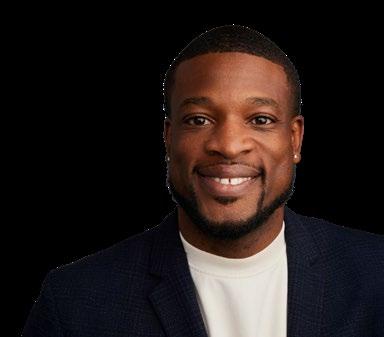
Xzavia Killikelly is continually discovering ways to harness the impact technology has on people and experiences, assisting individuals in connecting, engaging, and innovating with it. “The mix of creativity, technology, and problem solving makes every project unique,” he said.
Killikelly mentioned that his entry into the industry is not much different from that of many others; it was not a planned career choice but stemmed from his passion for giving back to the community. His cousin owned a live events AV company in San Diego and hosted a free movie night at the Jacobs Center. Killikelly served as the MC for the event and assisted his cousin with setting up and taking down the AV equipment.
“That was the first time I really saw the impact technology could have on a community—the way it could bring people together and create joy,” he said.
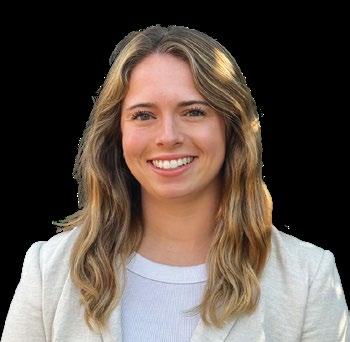

Andie Mace self-identifies as a geek. She grew up in a tech household in Fort Worth, TX, that “just loved gadgets.”
Andie Mace’s work in product marketing for Poly began in July 2021. Less than a year later, the company was acquired by HP. Initially, her focus was webcams, but now Mace handles the USB videobar line that has models designed for everything from huddle rooms to large conference rooms.
But Mace is driven by more than just a love of technology. A purpose-driven individual, she is a strong believer in the power of collaboration that’s enabled by the Pro AV industry. As she explained, we all work—a lot—and technology helps people connect with each other. “I really believe it serves a purpose,” she said. “Connection is literally the foundation to our existence as humans.”
Devices like videobars help remote workers see and hear people clearly from around the world. The way she sees it, that helps people feel less lonely and do better work because they are working in











































































































Title: Senior Product Marketing Manager Company: HP Location: Salt Lake City Overtime: This newlywed loves hiking, skiing, and being outdoors in general.























Title: Business Development Manager, The Americas Company: Bose Professional Location: Houston, TX Overtime: He has a fascination with words, rhyming, and the artistry of hip-hop. He even recorded a couple of tracks in a studio. “Even though the hip-hop career never took off, I still, to this day, have a deep love for the genre, but now I engage with music in a different way, one that’s just as exciting and meaningful,” he said.
That experience led him to become a sales manager for live events at the Beverly Wilshire Hotel, which he reflected on as a significant moment in his life. “Going from being an innercity kid to wearing a suit in the Four Seasons in Beverly Hills was surreal,” he said. “It’s hard to put into words what that experience and transition were like, but it was one of the best things that ever happened to me, and I’m grateful for everything I learned there.”
He hopes to apply these skills in a leadership position one day, which he envisions as his next step within the industry. “I would love the chance
If Mace sounds more like a social scientist and less like your typical product marketing manager, that tracks. After all, her professional journey began in a pre-med program as an anthropology major, at the University of Texas in Austin.

After college, she started in a marketing agency working for small and mid-size businesses (SMBs). From there, she moved to an ecommerce software company that also focused on SMBs. Software marketing introduced her to the world of technology. Later, Mace realized there was another path: physical products.
“Coming out of college, I didn’t know that was a thing,” she admitted. “That’s how I found my way into Poly.”
Mace is part of the core team that represents the customer, and she spends much of her time talking
Throughout his journey, he remained curious about the diverse facets of the industry, which led him to work in distribution and integration, and now in business development on the manufacturing side with Bose Professional. “Each move has been a stepping stone, and with each step, I’ve gained new knowledge and skills,” he added.
connection with other people. “The phenomenon of remote/hybrid work is so special and magical,” Mace added. “We can do a much better job of doing things we enjoy in our personal lives while having jobs that fulfill us.”









to lead, but I’m loving the process of becoming someone who is fit to lead, and I know the chance will come when the time is right,” he said.
Killikelly believes there is always something new to learn in our constantly evolving and advancing industry. He genuinely enjoys learning from and connecting with the individuals he collaborates with across various industries. Plus, he strives to understand what matters to them, their challenges, and seeks ways to help them.
“More importantly, I’m always searching for opportunities, especially opportunities to bring people together,” he said.
As a first generation Guyanese-American, one of his proudest opportunities is collaborating with professionals in his home country. This chance arose after he attended an “Economic Development in Guyana” session at a conference. He was amazed to learn about his country’s growth and recognized a need for AV technology in the evolving economy. Since then, he has been working with the moderator of that session on several initiatives there.
“One of the moments I’m most proud of was having the opportunity to speak with local kids at a camp in a village much like the one my father grew up in,” he said. “I encouraged them to dream big because anything is possible; you just have to ask the right questions!” By
Jennifer Guhl
to customers and understanding their challenges. That’s probably why she still has a soft spot for SMBs, which need technology just like larger companies but often lack the specialized knowledge to properly implement it.
Products like videobars can help bridge that knowledge gap and make sure smaller organizations have access to collaboration technology. As she explained, Mace helps her team focus on the “small techie things that have a really significant impact and can make people’s lives better. I truly believe that’s what we’re doing with the technology.”
Mace calls herself part of the “in-between tech baby generation,” a group that had a flip phone as its first phone and straddled the digital technologies of the past and present. It is a stark contrast to what she calls the “true tech baby generation” that is entering the workforce. They have always been surrounded by smartphones and other technology, so they aren’t impressed by “speed and feeds.” Instead, they care about mental wellness in the workplace.
Looking ahead, our Pro AV anthropologist is curious to see how the industry is going to adapt to a “big change” on the near horizon. Mace predicts the industry will have to change from wowing customers with specs to wowing customers with how technologies can help them have a better health and work/life balance. By Mark J. Pescatore
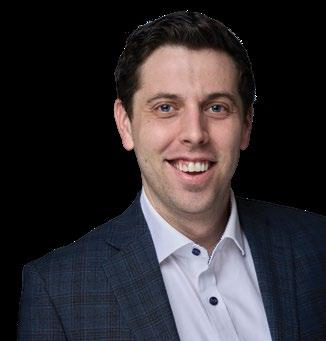
He doesn’t like taking “no” or “we can’t do this” for an answer.
Tom Petershack didn’t take your typical road to Pro AV. He wasn’t taking apart television sets as a kid to see what was inside, but instead was big into sports, getting outside, and playing with friends— and still very much is. However, after spending the past decade with Leyard and then Planar, Petershack has become an experienced veteran in the field.
Petershack heads up the media team at Planar, which is focused on projects for traditional broadcast and virtual production projects. But he is versatile. “My second hat is special projects,” Petershack said. “Anything that’s large, complex, and strategically important to the company—I typically spearhead those efforts.”
A graduate of the University of WisconsinMadison, Petershack went to school for engineering, and is a civil engineer by trade, focused on structural engineering. His first few



Basically, Melis Vardar is what you get when you mix a bookworm who loves to learn with a whole bunch of Pro AV gadgets and solutions.
She credits her love for learning to her soon-to-be 97-year-old grandmother, who to this day, as Vardar laughed, “works her iPhone better than I do.” Her grandmother was a doctor in Turkey and is still the smartest woman she has ever known. It was her passion to learn that drives Vardar still today.
As a member of the AV/IT team at UCLA, Vardar oversees operations in digital signage, finance, and security/safety. While she has always been Pro AV adjacent working with technology companies like TikTok and in the cloud at Oracle, this is her first go at managing an AV/IT team.
Though she admits she kind of stumbled into AV, she’s always seemed destined to be in the education space. “[Education] was perfect for me because I get to keep that passion of learning new technologies while also being in the education











































































































Title: Manager, AV/IT Operations Company: UCLA Location: Los Angeles Overtime: Vardar doesn’t just work in education, she’s engulfed by it. She’s passionate about learning and is currently going for her master’s degree.






years out of college found him working in the power sector doing heavy steel structural design. “I was commuting out to the suburbs, and the commute was awful,” Petershack recalled of his time in Chicago. “I saw this job posting for Leyard, looking for an engineer to help with the framing.”



space where I’m able to directly see the impact,” she said.














Title: General Manager-Media and Special Projects Company: Planar Location: Milwaukee, WI Overtime: As a dad to a 10-month-old, there isn’t a lot of free time, but Petershack enjoys chess and golfing.
And Petershack’s road to Pro AV was underway. As he recalled, circa 2016 when he was hired, all LED was essentially rear service requiring a custom mount. He was one of the engineers helping with the mounting design. Leyard eventually acquired Planar and Petershack began the transition from engineering to LED expert.
“It’s funny,” he recalled. “I look back nine years ago and at the products that we had—1.5mm was a tight pixel pitch and everything was rear service where it took almost 45 minutes to swap a single module. Now we’re down to 0.6mm available and the serviceability of all the products is so much better and simpler. I see that trend continuing, making LED easier to integrate, easier
While she may have “stumbled” into her current position at UCLA, it was only a matter of time that she would find herself there. After all, she attended Loyola Marymount University, took classes at UCLA, graduated from USC, and is currently working toward her master’s at Pepperdine University.
The classroom isn’t the only place Vardar is learning. “I’m someone who always wants to learn about the next thing,” she explained. “When I was at Oracle, I was in the cloud technology space in sales, but the other side of the business is this enterprise application space. So, I pivoted from the database cloud software over to the cloud application software because I wanted to get a better understanding of that side of the business. I think what’s so magical about AV—to someone who isn’t familiar with it, coming on this side and seeing everything that goes into making this seamless environment—I just find










to service, and down to those finer pixel pitches.”
Working in special projects and virtual production with all those tightly pixel pitched LED displays and walls, Petershack hears the word immersive regularly. “I do think [immersive is] a buzzword, but I do think some people are doing it really well,” Petershack said. “For example, the Sphere. I think when you get in there, you are lost in that world.”
So, here we are. Petershack has shifted from engineering to the media and LED world, and has had the opportunity to work on some unique and innovative projects that take a lot more creativity than mounting a 16x9 screen on a wall. How did he grow into a leader in his company for one of the largest trends in Pro AV today?
“I think there’s always a creative solution to every problem. It’s that thinking outside the box and coming up with a different way to do something, even if we’re used to doing it our set way, that allows people to get creative and to win projects and to be successful within the industry,” Petershack said. “I would encourage the future generation not to just take an answer that’s the norm as viable. Think how you could do it differently to solve a specific challenge, or how to do it better to set you apart from the competition.”
By Wayne Cavadi
very impressive and very cool that I get to be part of it.”
It certainly doesn’t hurt having someone like Joe Way—executive director, Digital Spaces, UCLA and a Pro AV icon in the educational space—be your mentor in a field that is foreign to you. “The way he puts out a plan, it’s not within the box— he realizes there is no box,” Vardar said. “That’s the way he approaches AV, and I love that.”
“Melis is a rare asset to the AV industry—she thinks strategically like a business leader while forging genuine, personal connections with her colleagues,” said Way. “With her unique blend of vision and heart, she not only drives progress but also inspires those around her to do the same.”
Now, close to nine months into her aspiring Pro AV career (with her first ISE officially under her belt), that childlike awe of learning still shines through.
“What’s so amazing about being in AV in education—you get to see your direct impact every day,” Vardar added. “You see the students in the classrooms, you see them learning. The fact that I can see that all the work that I’m putting into something directly improves their experience it’s just such a good feeling. I feel so honored to be in this specific space.”
By Wayne Cavadi

By Wayne Cavadi
The 2025 NASCAR Cup Series chase is underway, and it’s bringing an enhanced era of competition to the circuit with the help of FusionTECH and Samsung, which is now an official NASCAR Technology Partner. Using a slew of Samsung displays, including a 32x9-foot The Wall microLED display, NASCAR officiating is rising to a whole new level.
The 2025 season sees the introduction of the NASCAR Productions Remote Race Control Room. Located in Concord, NC, at NASCAR’s 58,000-squarefoot production facility, the control room is reinventing how races are officiated. Samsung and its clear, massive display technology was the ideal fit for achieving the ultimate goal.
“NASCAR is a technology-forward organization with highly modern core networks, servers, media, event, venue, and racing function applications,” said David Phelps, head of display division, Samsung Electronics America. “Key goals of the partnership between [Samsung and NASCAR] included reducing travel costs for officials by enabling remote race
management and creating the opportunity for NASCAR to introduce a new Remote Race Control Entitlement sponsorship, potentially opening new revenue streams. Overall, the collaboration was designed to address NASCAR’s evolving needs while boosting efficiency and flexibility when officiating large-scale races.”
So, what’s under the proverbial hood and how did it all come together? SCN went inside to find out.
A project of this magnitude may seem like it took forever to come together, but that was hardly the case. In fact, it was initiated in March 2024 and the The Wall installation was completed in August 2024. The control room was fully operational with all the displays for the 2025 NASCAR season-opening Cook Out Clash at Bowman Gray Stadium on Feb. 2.
FusionTECH, a sports and entertainment technology consulting agency based in West Hollywood, CA, was selected for the project. The company was founded in 2021 by CEO Brandon McNulty, who is the former CTO of the International Speedway Corporation, and he said there’s more driving the control room than just The Wall. Two
85-inch LED displays are positioned on opposite sides of The Wall, and there are additional monitors at each workstation within the control room.”
“This is the first time The Wall has been used for remote officiating,” McNulty explained. “The monitors in race control are used to assist with officiating and data analysis. The officials leverage the monitors for an up-close look when analyzing pit stops, calling penalties, and infractions. Footage can also be broadcast from the monitors to The Wall, providing a larger-than-life perspective for replay analysis.”
As the technology partner, Samsung was ideal in enhancing the officiating experience. “Pre-Samsung screens, all officials traveled to the track to do their jobs,” explained Steve Stum, NASCAR VP operations and technical production. “Keeping officials at home gives them a better quality of life by not traveling and being away from family, but also the resolution of the screen keeps them engaged in their jobs using current technology.”
There are a total of 37 Samsung products in the remote race control room. “The initiative aimed to mirror systems in other professional sports leagues, like the NFL’s Remote Officiating, to modernize and streamline NASCAR’s processes,” Phelps said. “The remote race control room also integrates 25 models of the 27-inch ViewFinity S6 monitor and seven 49-inch Odyssey G9 ultra-wide curved monitors for racing officials to gather and analyze data about track operations.”
Those curved monitors showed that attention to detail was taken to make officials lives easier and thus provide a better race-day experience for fans and everyone involved. McNulty said NASCAR requested
curved monitors because they are more comfortable on the eyes during long hours of continuous viewing. They also maximize desk space, since officials previously used two monitors and now had one ultra-wide display that could show two frames on a single screen.
“This room allows the NASCAR officials to use more modern technology for replays, data mining, communications, etc.,” said Stum. “The resolution of the screen gives them the confidence and feeling just like they are at the track. With up to 200 video inputs and all the driver radios at their disposal, we now have better ability at the track to look at content and feed that information back to race control on site to help make officiating more accurate and faster.”
Of course, the star of the show is The Wall, with its visual clarity and scale enhancing the precision and efficiency of race-day operation. Per Phelps, the screen allows up to 24 officials in the control room to review video footage and accurately officiate races from a distance.
Considering all the technology that had to be installed within such a short window, there must have been some challenges, right? Not necessarily.
“Thanks to careful planning and The Wall’s flexible design, the actual installation went off without a hitch,” McNulty admitted. “NASCAR prepped the surface with plywood to ensure it could support the mounts. The biggest consideration was making sure the surface area for the installation was flat and even. NASCAR installed adjustable custom mounts that allowed for the eventual installation of The Wall to be much easier.”
It is mind boggling that with all those displays running that the room isn’t akin to a sauna. To McNulty and his team’s surprise, the heat generated by The Wall itself was much lower than expected. To optimize cooling, FusionTECH simply installed custom frames around the screen, with carefully placed vents at the top and bottom to pull air through the screen and keep it cool.
Dedicated air handlers were put in place to manage the technical side of the building, while extra exhaust and recirculation systems were incorporated to help expel the heat from the control room. “The facility was built with the understanding that a large screen would eventually be installed,” McNulty confirmed. “As a result, extra care was taken to ensure proper ventilation and heat management.”
Officiating from the control room is just the tip of the iceberg for NASCAR and beyond. Thinking about the future for NASCAR, Stum said there could be instances down the road where a reporter or maybe an official could join the broadcast live from the room and give the perspective of the officials to the home viewers. “I think that gives the viewers an opportunity to look behind the curtain into what goes
on from and officials point of view,” he said.
According to Stum, the NASCAR Productions Remote Race Control Room offers a lot of potential and a huge opportunity for the organization to capitalize on technology. “The new race control has been great to get up and going,” he added. “The number of views
of cameras that we didn’t have before will give us the ability to mine data and look for infractions that we never had before. The response of the officials has been overwhelmingly positive. From the moment you walk into the room you can see what it can provide to the officials to help with their jobs.”

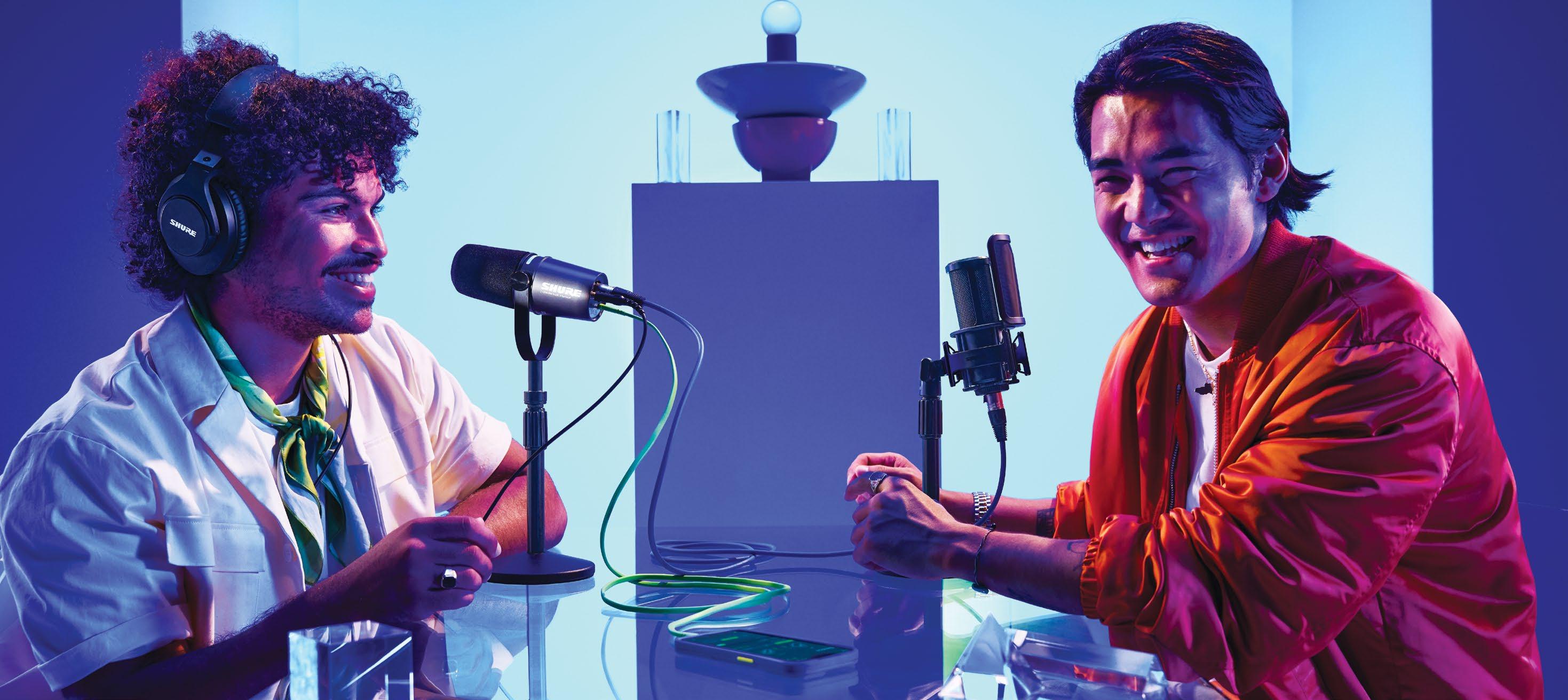
By James Careless
According to DemandSage, a data analysis firm, there are more than 4.4 million podcasts as of 2025, up from around 4.2 million in May 2024. Meanwhile, the number of podcast listeners could grow more than 6% to about 584 million this year and could rise to more than 651 million by 2027. Worldwide, the podcast market was worth more than $30 billion in 2024 and could reach $131 billion by 2030.
Based on those numbers, it’s no wonder podcasts are driving microphone sales, since content creators need mics to be heard. Joe Nassar, brand manager of Saramonic USA, said this “explosion” of podcasting, live streaming, and similar content is “creating many new customers and consumers of these types of products.”
Podcasting is probably a consideration for many of your corporate, educational, and worship clients. Some may already be producing content, while others could be planning for future podcast projects. So, what trends are influencing purchasing decisions? Without a doubt, simplicity and cost lead the pack. Podcasters want mics
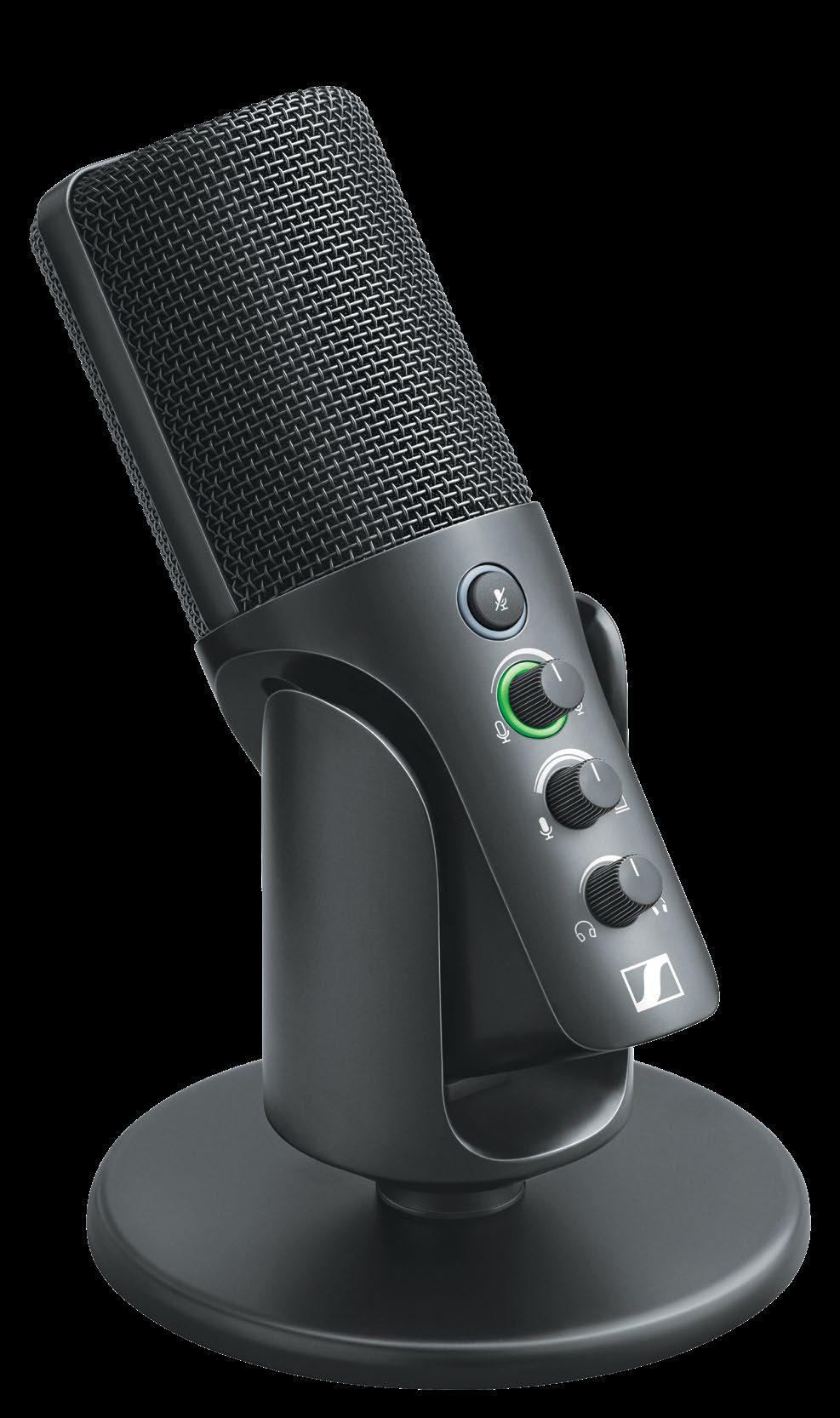
that are easy to setup and use, as well as affordable.
“Since COVID and the rapid growth of the podcasting medium, people have looked for easy and accessible audio solutions that don’t require an audio engineering degree to tell their story,” explained Robb Blumenreder, Sennheiser’s customer and market insights manager for pro audio. “As everyone from your realtor to music teacher are starting podcasts, it has become important to enable all levels of content creators with the right tools. Solutions like the Sennheiser Profile USB microphone, a USB-C based solution, empower creators with an all-in-one, plugand-play option that is easy to use, affordable, and offers professional-level sound quality.”
“Simplicity and versatility are key,” agreed Sean Sullivan, Shure’s associate director of product management. “The market is looking for less gear, fewer cables, and simple operation.”
This is why his company recently introduced the Shure MV7i, a USB-connected, yoke-suspended microphone. It features a combo XLR/1/4-inch input jack that lets you plug a second microphone (or an electric musical instrument) directly into the microphone. “Shure’s MV7i is a direct response to customer’s needs with high-quality audio with a two-channel interface and mic in one unit,” Sullivan said.
Another trend driving podcaster microphone purchases is the desire for podcasters to visually brand themselves as serious broadcasters. This is why so many podcasters are seated behind hefty desk/ arm-mounted microphones—as if they were hosting World War II-era news bulletins from London during the Blitz. Blumenreder characterized this trend as the microphone as status symbol.
“Before, you never wanted to see the microphone in a video recording,” he said. “These days, seeing the
microphone has become synonymous with having a serious show, quality equipment, and investing in your craft as a podcaster.”
Because of this branding statement, microphoneequipped headsets are rarely used by podcasters, whether on camera or not. “I don’t think these are very popular because they are not seen as professional, even though these types of headphone/microphone combos are very versatile and give you a consistent sound,” said Nassar. “Instead, many users want the look of a large diaphragm dynamic microphone in front of them to legitimize what they’re doing.”
A related trend influencing podcaster purchases is conservatism. “Brands like Shure are creating innovative products to stand out and offer more features, like with the MV7i, but podcasting customers seem to gravitate to more standardized and accepted products,” Nassar told SCN. “This is why you see the same mics like the Shure SM7B, Rode PodMic, and to a lesser extent Electro-Voice RE20s in so many productions. Customers and new podcasters seem to think that having the same products as successful podcasters gives them more cachet and make them seem more legitimate. But unfortunately, this kind of ‘me too’ mentality will only stifle innovation and new product developments and customer affordability.”
Finally, podcasters tend to buy cardioid microphones with their directional pickup patterns, rather than omnidirectional mics that capture everything in the room. “The vast majority of mics we see for podcasting are cardioid pickup patterns,” Blumenreder observed. “These are ideal because they do a great job of rejecting the background noise and reflections, only picking up on the person speaking directly into it. Without fail, for podcasts, the cardioid is the most popular pickup pattern.”
USB Domination
When it comes to podcaster microphone connectivity, USB is king. But XLR has a part to play in this brave new world of audio production. “The popularity of USB is driven primarily by the absence of other products needed to make this kind of audio production work,” Nassar said.
Although some podcasters like to see themselves as being at the cutting edge of audio production, the microphones they choose often reflect the safe, proven form factors of yesteryear. Plus, traditional styled radio/production microphones are preferred for the legitimacy they impart to podcasters, even

At the same time, relying on USB connections alone “does limit some users in the long run,” he noted. “This is why you’re seeing many [podcasting] products now that are both USB and XLR.”
The reason USB is so prevalent has everything to do with the current nature of podcasting. “Generally speaking, many podcasters start off by doing it on the side semi-professionally to augment their business or as a hobby,” said Blumenreder. “With this approach, and no formal audio training or budget for studio time, most podcasters tend to begin with a simple USB microphone that starts at a low price point. However, as we look towards established, professional podcasts, we can expect to find higher-end equipment, typically XLR-based, with much more infrastructure supporting the end user’s needs.”
though some innovative products have been expressly designed to solve podcaster problems.
Time will tell if the Shure MV7i and similarly creative mics will catch on as the podcasting industry matures. But one thing appears certain: As more podcasts are produced, mic sales are bound to grow as well.
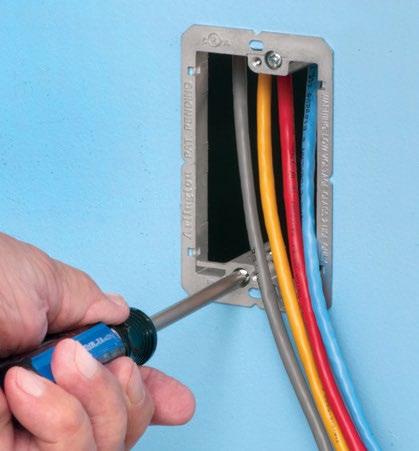




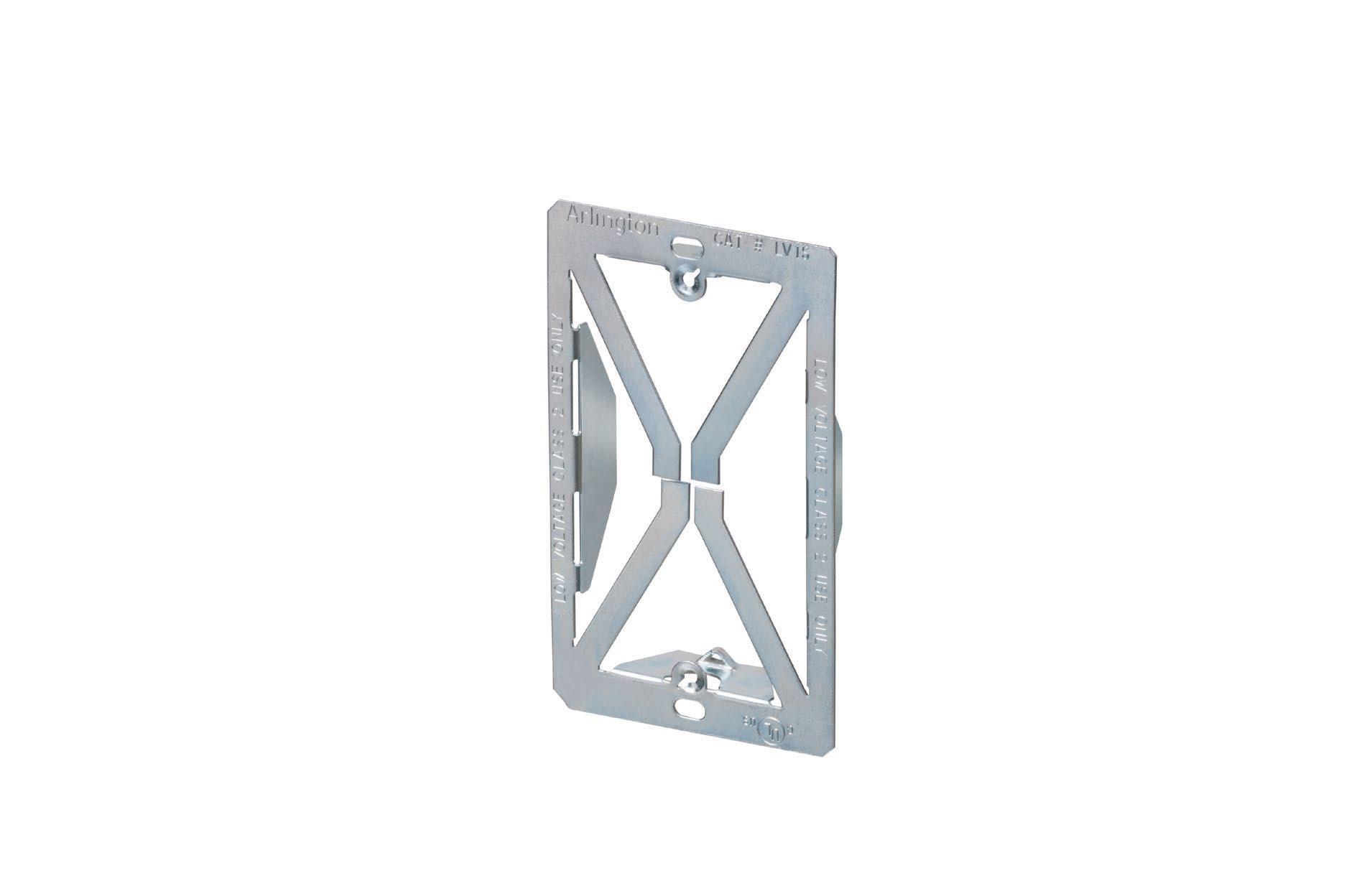
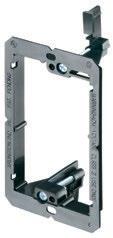
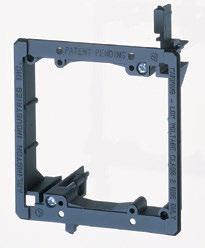




Leader’s new comprehensive NDI signal troubleshooting and monitoring software application provides a quick and simple way to check NDI streams. NDI Checker runs in a browser on a standard Windows PC. Simply connect to a signal network and NDI Checker can display a full list of NDI signals in the implementation, give clear access to all the technical parameters of any individual signal, provide a confidence monitor, and create an event log. On one screen, operators can instantly confirm video format, bitrate, and received frames. Up to 100,000 events can be captured by the event log, displayed on the monitor and available for export as a CSV file for further analysis.

DANTE-12GAM is a single-channel, 12G-SDI Dante audio embedder/disembedder Mini-Converter.
Offering the same core functionality as AJA’s popular openGear OG-DANTE-12GAM, it streamlines hybrid IP workflows by making it easier to bridge between SDI sources and destinations with embedded audio to/from the Dante audio ecosystem, which enables distribution of multi-channel, low latency, high-resolution digital audio across a switched Ethernet network. DANTE12GAM can disembed 16 channels of audio in and embed 16 channels of audio out, for up to 32 channels of Dante IP audio. The unit features a compact design, including an LCD display with control buttons. DANTE-12GAM is compatible with a range of Audinate software for routing and configuration choices, including Dante Controller and Dante Domain Manager, and can be configured via AJA’s free eMini-Setup software.
Saramonic’s first digital UHF wireless dual-channel microphone, the Saramonic K9 features dynamic range with proprietary LNA technology for anti-interference performance and global coverage. Designed with an ultra-wide 550-960 MHz UHF spectrum, it
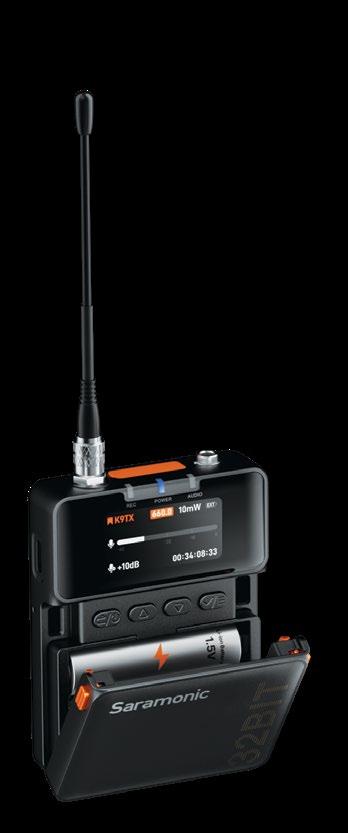
surpasses the conventional 2.4 GHz with superior stability. Thanks to its advanced digital transmission, the system boasts 130 dB input and 120 dB analog output, as well as digital transmission for uncompressed recordings. Wired and wireless time code sync allows frame-accurate audio and video alignment, significantly reducing post-production time. With up to nine hours of battery life on its transmitter and fast USB-C charging, the K9 is built for extended shoots. The receiver’s top display provides easy info scanning. Plus, its IP67-rated miniature mic is water and dustproof. The Saramonic System app allows remote frequency selection, gain control, real-time monitoring, and more from a

possibility to embed up to four channels of highresolution digital audio and RDNET management over a single Cat 5 cable. Each Control 24A unit can manage up to 64 speakers equipped with A2Net cards, fully integrating with AuroraNet software.

Designed for corporate and education facilities, the StarTracker Mini is an ultra-compact, all-in-one camera tracking system. It embodies the precision and dependability of the StarTracker Classic, now condensed into an ultra-compact package with no external processing unit. The StarTracker Mini is specifically designed to meet the needs of content creators who operate in more confined spaces and lack the ceiling height of full-scale studio facilities served by StarTracker Max. Unlike SLAM (simultaneous localization and mapping) technologies, the StarTracker Mini knows its place, requiring no
Vizrt’s first dedicated NDI audio connectivity and monitoring technology solution, Viz Connect Audio enables full control of audio sources on an NDI network. It adds a much-needed ability to manage any and all NDI sources on a network, both visually and aurally. Viz Connect Audio makes it easy for users to connect analog audio sources, configure and convert them to NDI, enabling their use in a local or remote NDI ecosystem. At the same time, Viz Connect Audio allows visibility of all NDI audio sources on the NDI network.
Ideal for event producers, corporate communications, educational institutions, content creators, broadcasters, and anyone doing a live production, Viz Connect Audio integrates easily, enabling the visibility, monitoring, and control of a production’s audio sources.



high-resolution digital audio and RDnet control data though a single cable, replacing the need for bulky cabling and complex third-party networking protocols. The new “point to point” protocol eliminates any loss caused by conversions from the mixer output to the speakers. The ACU-1 card enables the implementation of the A2Net protocol on speakers equipped with DIGIPRO G4 amplifiers. The Control 24A offers the
The MLC Plus 500 is an easy-to-deploy, all-in-one compact Ethernet control system with a 4-inch color touchscreen. As with all Extron MLC Plus controllers, it combines a familiar user interface with a powerful control processor in one compact product. Intuitive button layout templates available within Extron’s Global Configurator software are designed to support common AV functions like display power, source selection, and volume control. The provided pre-defined templates aid with setup and configuration by eliminating the need to create custom GUIs or workflows from scratch for classrooms, boardrooms, or other environments. Plus, the unit integrates seamlessly with Extron’s GlobalViewer Enterprise software for complete AV resource monitoring, management, and control over a computer network. The MediaLink Plus family of controllers supports popular Web browsers and the Extron Control App.

